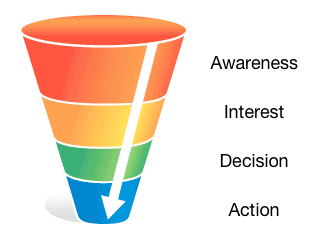Mastering The Sales Funnel

A Comprehensive Guide for Beginners
Introduction
In the fast-paced world of online business, understanding and effectively utilizing a sales funnel is crucial for success. A sales funnel is a systematic approach to lead generation and conversion, guiding potential customers through a series of steps that ultimately result in a sale. Whether you are an entrepreneur, a marketer, or a business owner, mastering the sales funnel can significantly boost your revenue and overall business growth. In this comprehensive guide, we will delve into the intricacies of a sales funnel, providing you with actionable insights, examples, and case studies to help you grasp this fundamental concept.
What is a Sales Funnel?
At its core, a sales funnel is a visual representation of a customer’s journey from awareness to purchase. It is divided into stages, each with a specific goal and corresponding actions. The stages typically include:
1. Awareness
In the awareness stage, the primary objective is to capture the attention of potential customers and create brand awareness. This can be achieved through various marketing strategies such as content marketing, social media campaigns, search engine optimization (SEO), and paid advertising. The key is to generate leads and make potential customers aware of your products or services.
2. Interest
Once potential customers are aware of your brand, the next stage is to pique their interest and build engagement. This can be done through compelling content, personalized messaging, and targeted offers. The goal is to establish a connection and persuade them to explore your offerings further.
3. Decision
In the decision stage, potential customers evaluate your products or services and compare them to alternatives. This is the critical moment where you need to showcase the unique value proposition of your offerings. Testimonials, case studies, and demonstrations can be powerful tools to instill confidence and help customers make an informed decision.
4. Action
The action stage is where the conversion happens. It involves encouraging potential customers to take a specific action, such as making a purchase, signing up for a newsletter, or scheduling a consultation. Clear calls-to-action, streamlined processes, and a frictionless user experience are essential to drive conversions effectively.
5. Retention
While many sales funnels end at the action stage, a comprehensive approach includes the retention stage. Retaining existing customers is as important as acquiring new ones. It involves providing excellent customer service, nurturing ongoing relationships, and encouraging repeat purchases.
Examples and Case Studies
To better illustrate the concepts discussed above, let’s explore a couple of examples and case studies that highlight successful sales funnel implementations.
Example 1: E-commerce Sales Funnel
Imagine you have an e-commerce store selling handmade jewelry. Here’s how a potential sales funnel could look:
- Awareness: You create engaging blog posts, social media content, and collaborate with influencers in the fashion industry to attract potential customers to your online store.
- Interest: On your website, you offer a free guide on “Choosing the Perfect Jewelry for Every Occasion” in exchange for visitors’ email addresses. This builds your email list and allows you to nurture leads through targeted email marketing campaigns.
- Decision: You showcase stunning product photos, customer reviews, and testimonials, highlighting the uniqueness and quality of your jewelry. Additionally, you offer a limited-time discount for first-time buyers.
- Action: Your website features a user-friendly checkout process with multiple payment options and a hassle-free return policy. Customers can easily make a purchase and receive a confirmation email with order details.
- Retention: After a purchase, you follow up with personalized emails, offering styling tips, exclusive discounts, and notifying customers about new product releases. This helps build long-term relationships and encourages repeat purchases.
Case Study: SaaS Sales Funnel
Let’s consider a case study of a Software-as-a-Service (SaaS) company:
- Awareness: The SaaS company creates informative blog posts and shares them on social media platforms, targeting professionals in the marketing industry who could benefit from their software.
- Interest: They offer a free webinar on “Streamlining Marketing Campaigns with Automation” and collect participants’ email addresses for further communication.
- Decision: During the webinar, they demonstrate how their software simplifies complex marketing tasks and provides measurable results. Attendees receive a limited-time offer for a discounted subscription.
- Action: After the webinar, attendees are redirected to a dedicated landing page where they can sign up for a free trial. The signup process is straightforward and requires minimal information.
- Retention: Once users sign up for the free trial, the SaaS company sends regular updates, tips, and success stories via email. They offer personalized onboarding sessions and provide excellent customer support to ensure customer satisfaction and encourage subscription upgrades.
Conclusion
Mastering the sales funnel is essential for any business seeking growth and success in the digital landscape. By understanding each stage of the funnel and implementing effective strategies, you can attract potential customers, nurture their interest, guide their decision-making process, drive conversions, and cultivate lasting relationships. Remember, a well-designed and optimized sales funnel is a powerful tool that can propel your business ahead of the competition.
Start harnessing the potential of sales funnels today and witness the transformative impact it can have on your business.




